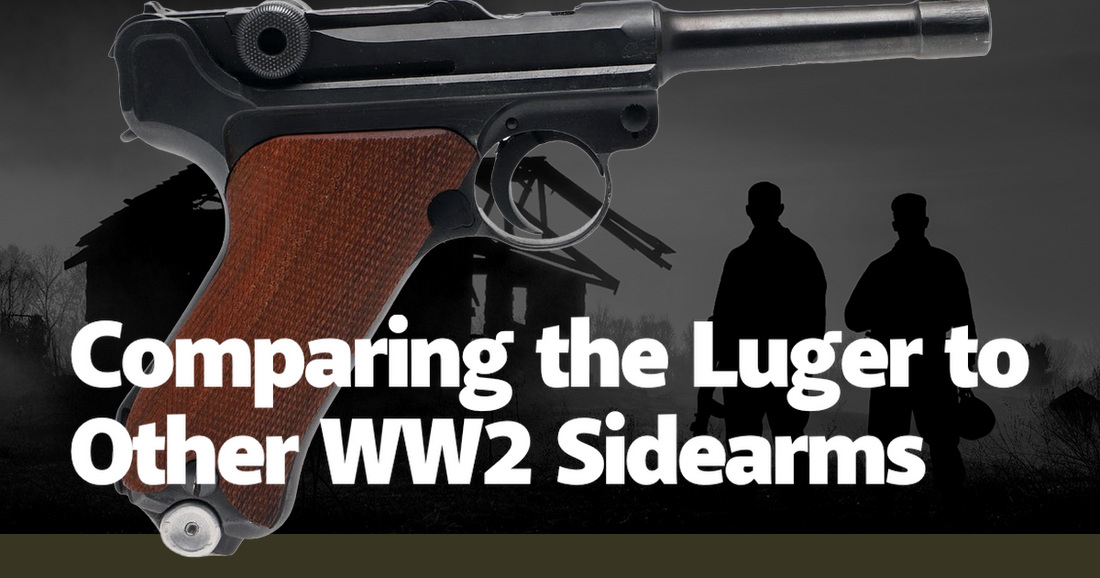The Luger P08, an iconic sidearm of World War II, is often romanticized for its distinctive design and historical significance. With its toggle-lock mechanism and ergonomic grip, the Luger was a symbol of German engineering prowess. However, its place among other WW2 sidearms is a topic ripe for exploration. The Luger was not just a weapon; it was a statement of precision and elegance, a stark contrast to the utilitarian designs of its contemporaries. Yet, when we delve deeper, the Luger’s performance in the gritty reality of war reveals a more complex story.
Contrasting the Luger with the American M1911 reveals a tale of two philosophies. The M1911, designed by John Browning, was a robust and reliable workhorse chambered in .45 ACP. Its stopping power and durability in adverse conditions made it a favorite among American forces. While the Luger’s 9mm Parabellum round was effective, it lacked the punch of the .45 ACP. Anecdotes from the battlefield often highlight the M1911's ability to function in mud and grime, where the Luger’s intricate mechanism could falter. The M1911 was a testament to American pragmatism, designed to perform reliably under the harshest conditions.
The British Webley Mk IV revolver presents another fascinating comparison. The Webley, with its top-break design, was a revolver that harked back to an earlier era of sidearms. Chambered in .38/200, it was less powerful than the Luger but offered unparalleled reliability. The Webley’s simplicity meant fewer malfunctions, a critical factor in the chaos of combat. British soldiers appreciated the Webley for its ease of use and maintenance, contrasting with the Luger’s need for meticulous care. The Webley’s ruggedness made it a dependable companion in the unpredictable theatres of war.
On the Eastern Front, the Soviet Tokarev TT-33 offered a different perspective. The Tokarev, chambered in 7.62x25mm, was a semi-automatic pistol with a much simpler design compared to the Luger. Its high-velocity round was capable of penetrating body armor, a distinct advantage in certain combat scenarios. The Tokarev’s design was influenced by the M1911, but it incorporated the Soviet emphasis on ease of production and reliability. Unlike the Luger, the Tokarev could be mass-produced quickly and maintained with minimal training, reflecting the Soviet approach to warfare.
The Japanese Nambu Type 14, another WW2 sidearm, illustrates the varying standards of quality and reliability among wartime pistols. The Nambu, often criticized for its poor ergonomics and unreliable performance, was a stark contrast to the Luger. Japanese soldiers found the Nambu’s 8mm round underpowered and the pistol itself prone to jamming. In the humid and harsh conditions of the Pacific theater, the Nambu’s shortcomings were glaring. This comparison underscores the Luger’s superior craftsmanship, even if it was not without its own flaws.
German soldiers, despite their admiration for the Luger, often preferred the Walther P38 in combat. The P38, with its double-action trigger and simplified design, was more reliable and easier to produce than the Luger. The P38’s 9mm round provided the same effectiveness, but its operational reliability in various conditions was superior. Stories from the front lines often recount soldiers’ relief when issued a P38 instead of a Luger, valuing functionality over the Luger’s aesthetic appeal and complex mechanism.
The Italian Beretta M1934, another contemporary, offers a glimpse into the varied landscape of WW2 sidearms. The Beretta, compact and reliable, was chambered in 9mm Corto (.380 ACP). While less powerful than the Luger, it was praised for its simplicity and ease of use. Italian officers valued the Beretta for its balance and quick draw, essential in close-quarters combat. The Beretta’s design philosophy was closer to that of the M1911 and Tokarev, prioritizing reliability and ease of production over the intricate engineering of the Luger.
In summary, comparing the Luger to other WW2 sidearms reveals a spectrum of design philosophies and battlefield realities. The Luger, with its precision engineering, stood out for its aesthetic and historical significance. However, its performance in the harsh conditions of war often fell short compared to the rugged reliability of the M1911, the Webley, and the Tokarev. The P38’s emergence as the preferred German sidearm further highlights the practical limitations of the Luger. This comparative analysis underscores the varied approaches to sidearm design during WW2, each influenced by the unique demands and philosophies of the warring nations.

